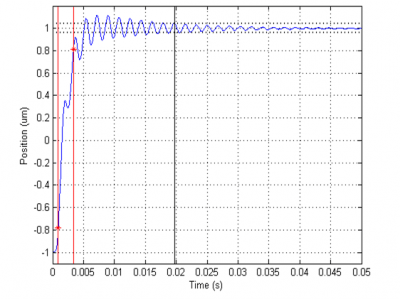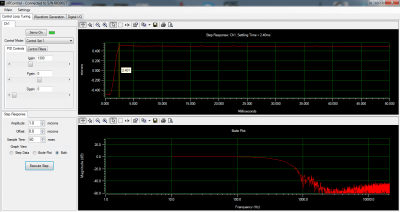Settling time is defined as the time it takes for a piezo stage to move to a commanded position and settle to within 2% of its final value when performing a step response. A small signal step response reflects the dynamic characteristics of the system in greater detail. A step response for 1μm is a common measure used (this is the settling time measure listed for nPoint stages).
It is important to note the difference between rise time and settling time. Rise time often considered to be the time it takes for the nanopositioning system to move from 10% of the commanded position to 90%. This time is often much quicker than settling time and while it does discuss the relative speed at which a stage can step, it does not take into affect the time it takes for the stage to “settle” in its desired position. When a large step is used, i.e. equal to the full travel range of the stage, the settling time is limited by the current output capability of the controller.
Both the settling time and rise time are shown in figure 1 for a system with relatively high control gains where oscillations are observed. The system is commanded to perform a 2μm step. The red lines define the rise time, ~2.5 msec in this case, while the black line shows the settling time of ~20 msec.

Figure 2 is a screenshot of an actual step response with nPControl software. In this case a nPX100 piezo stage was used in conjunction with an LC.400 controller. nPControl software allows the user to control PID parameters and notch filters digitally through the windows based GUI. Varied parameters can allow piezo stages to achieve better step responses. Here is a detailed video on control-loop tuning where setting these parameters is featured.

Wikipedia Links for More Information




